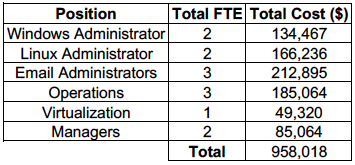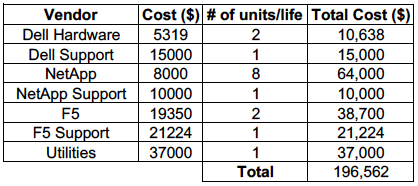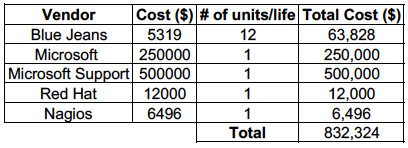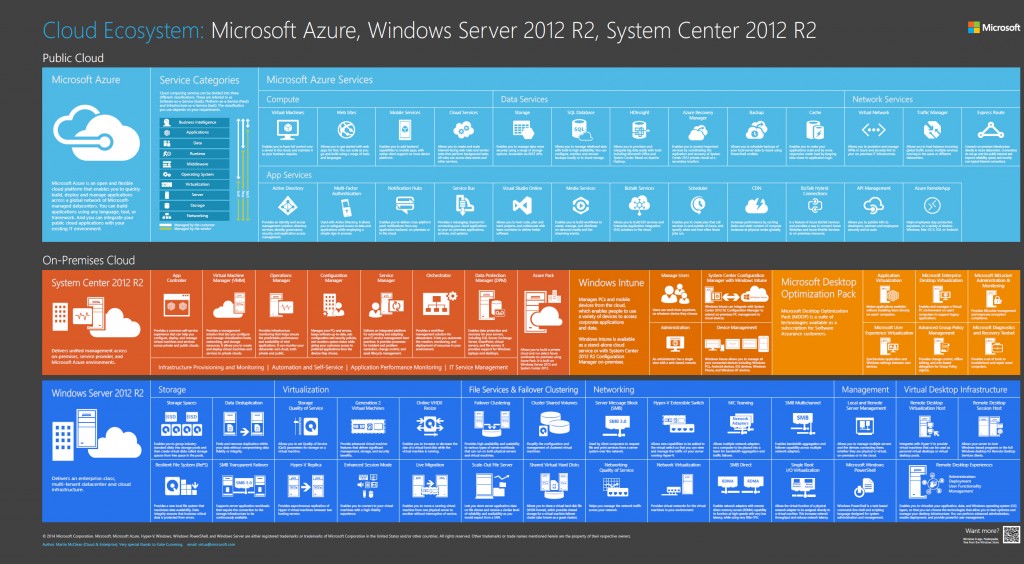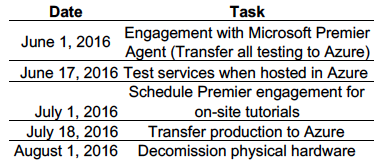Memorandum
TO: Information Services Committee
FROM: Ryan Nagamatsu, Windows Team System Administrator
DATE: May 7, 2016
SUBJECT: Feasibility Report for Load Balancer Purchase
As requested by the Information Services Committee, I have prepared a feasibility report regarding the purchase of load balancers for the data center. This request was made to find replacements to the F5 Load Balancers which are nearing their end of life.
With recent cost cuts made clear by the President, cost will be one of the main concerns in the options provided. In addition to cost, support policy will also be highly considered in this process. The cost of each load balancer in comparison to the life expectancy needs to be in our price point.
With careful consideration and extensive research, the load balancers that I have found to be the best options is the Barracuda Load Balancer ADC 540 for the price of $19,117.99.
If you have any further questions, ideas, or concerns, please contact me at ryannagamatsu@gmail.com.
Introduction
System Administrators must configure their servers to be utilized at an optimum level of efficiency. In order to do so, it is imperative that we consider the replacement for the current F5 Big IP load balancers, which are coming to their end of life next month.
If we do not consider the replacement to these load balancers, essential services like Exchange, LDAP, and much more will suffer severe performance issues. These performance issues will not only promote unnecessary stress on the servers, but our stakeholders will be able to notice the decline in performance from these affected servers. With the end of life nearing next month, this issue was presented by a Linux Administrator who has contributed and confirmed the results in my research.
This feasibility report will cover the committee’s’ criteria for the purchase of new load balancers with the comparison of three different load balancers from various vendors. This report will conclude with a recommendation that will be best suited for Information Services in regards to budget and support.
Objectives
With various vendors of load balancers, I have chosen ones that can be easily placed in our datacenter and that have support plan options which is crucial in regards to our current SLA.
The
The durability of the scrub tops, in regards to the type of fabric blends , is of high importance, because the goal is to have these circulate for a long time in the hospital. The functionality aspect is taken into consideration for the use of pockets, to carry different types of medical equipment around. The overall objective of this report is to find and compare different options of scrub tops, and narrow them down to a feasible, yet affordable choice.
Method
The data collected was configured from three well name vendors in load balancers, F5, Cisco, and Barracuda. These companies are the highest rated load balancers that come at a premium price point. While researching these units, the following criteria were well considered:
- Cost: Given recent talks on cost cuts across the organization, the goal was to find a load balancer that would be a sufficient replacement to our current one.
- Support: With our current load balancer which had a total cost of $53,489 with the cost of the unit and support for the life of the unit, a unit with a similar support policy will be carefully considered. All three units and their support contracts are listed below.
- Specifications: Each load balancer must be able to handle at least 500 transactions per second and support remote access due to our large enterprise environment. It is important that the load balancer has an ample amount of ram to facilitate traffic connecting to our servers.
Below is the table of the three units that have been considered to be replacements to the current F5 load blancer, the results of the three criteria comparisons, and user reviews from cdw.com (one of our current vendors):

1) HW-BIGIP-4200-web-PPT.png. Digital image. Big-IP Hardware | VIPRION | F5. F5, 2016. Web. 13 May 2016. 2) Im-5xxx-image.png. Digital image. LoadMaster LM – 5000 Load Balancer. KEMP, 2016. Web. 13 May 2016 3) 0001469.png. Digital image. Barracuda Load Balancer ADC 640. Barracuda, 2016. Web. 13 May 2016
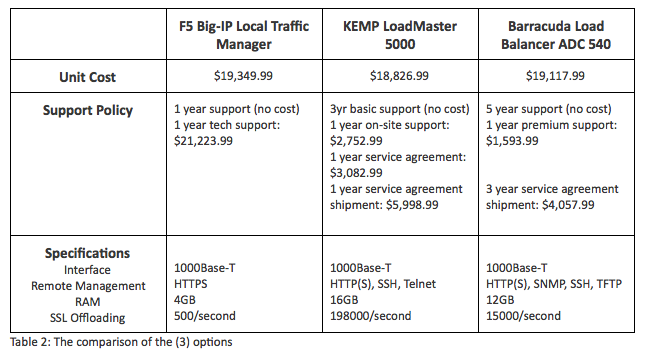
Discussion
The three recommended load balancers would be a good choice for replacing the current F5. All of the brands that were suggested meet our criteria in cost, support and specifications. However, the cost of support from F5 is more than the price of an additional load balancer. Only KEMP and Barracuda come with the amount of RAM that is comparable to the the current F5 specification that we have in place. While KEMP and Barracuda offer a higher RAM and SSL offloading, the F5 Big-IP could be easily swapped without any real configuration.
Conclusion
Cost, support, and specifications were the criteria in which a new load balancer would be chosen upon. With little reviews by users on each unit, the three criterias that were mentioned previously were heavily weighted in consideration of these products.
The three options that were deemed viable from this research offered remote management, a preferred rate of SSL offloading, and support packages which were within budget. The F5 Big-IP had one of the best support packages for 1 year which consisted of hardware replacement, phone and on-site support for 10 hours a day / 5 days a week, and a guaranteed response time of 10 days or less. The KEMP LoadMaster, offered a competitive support contract for half the price, but only guaranteed tier 1 support within 1 hour for 24 hours a day / 7 days a week. Tiers 2 and above were limited support and did not specify the response time for those tiers. Barracuda offered a support package of tier 1, 2, and 3 support for 24 hours a day / 7 days a week, with a response time of 1 business day. In addition they offered hardware replacement and the hardware came with a 5 year support contract for no cost.
Recommendation
After careful consideration, the Barracuda Load Balancer ADC 540 is the best option for Information Services. Coming with an unbeatable support contract at such a low price, it is in my opinion that this load balancer will be able to meet our standards of operation while cutting back on unnecessary cost. Having phone, email, on-site, and instant replacement support guarantees that this is a valuable purchase for Information Services.
